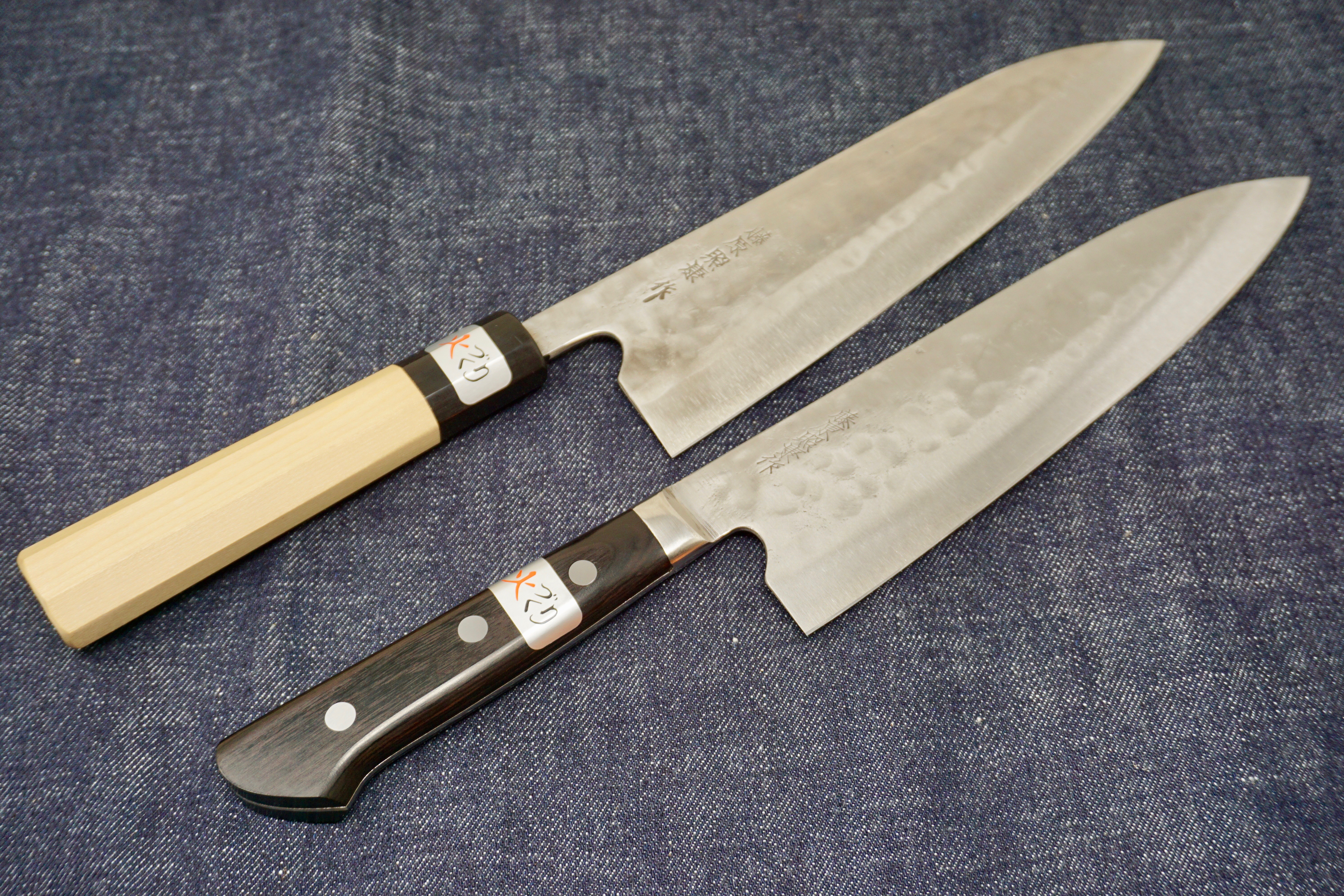Full Tang Kitchen Knives
Posted by Derek Swanson on 8th Apr 2021
There’s a lot of marketing that touts the benefits of knives with a full tang. The tang is the metal part that extends from the blade into the handle. It can run all the way to the bottom of the handle, which is considered a full tang. Anything short of that is often called a partial tang or stick tang.. The truth is that having a full tang doesn’t make a knife any better than a knife with a tang that is less than full, they are just different.
As most knifemakers warranty their products, they are unlikely to affix a handle that is not strong enough to support a blade. Therefore judging the quality and strength of a knife by the length of the tang will not be an accurate indicator of those characteristics. The length of the tang will be a factor in how the knife is balanced more than anything else. The tang adds weight to the handle, acting as a counterweight to the blade. Average-sized chef knives with full tangs often have a balance point in the center of the knife, close to where the blade meets the handle.

Teruyasu Fujiwara Maboroshi blades come in both western handles and wa handles.
One reason Japanese knives have grown in popularity is they are traditionally made with smaller tangs that are embedded into light wood handles. This not only decreases the overall weight of the knife, requiring less energy to use, but shifts the balance point to the front of the knife. With the majority of a knife’s weight above the cutting edge, gravity then works to the advantage of the user.
Knives with partial tangs are often secured to the handle with a pin or epoxy, or a combination of other adhesive measures. Buying such knives from a reputable manufacturer or dealer should allay any concerns about the strength or quality of the knife. As to which style you should choose, consider which knife feels the most balanced in your hand, as that will directly factor into the comfort and joy the knife brings you when using it.

